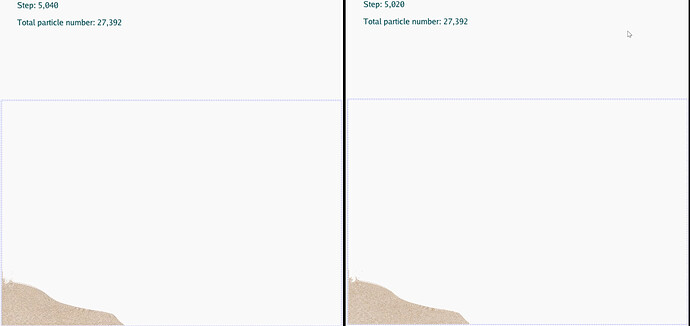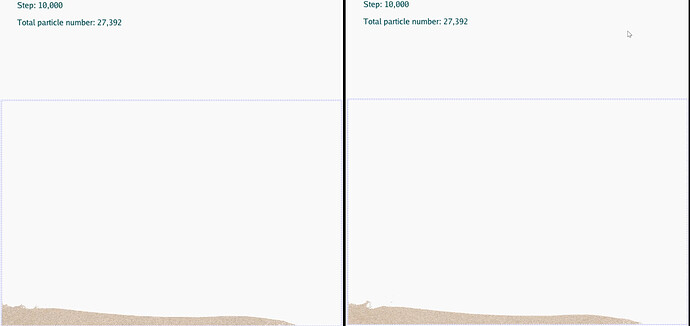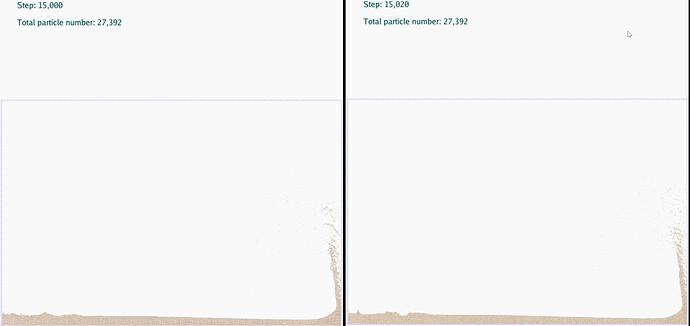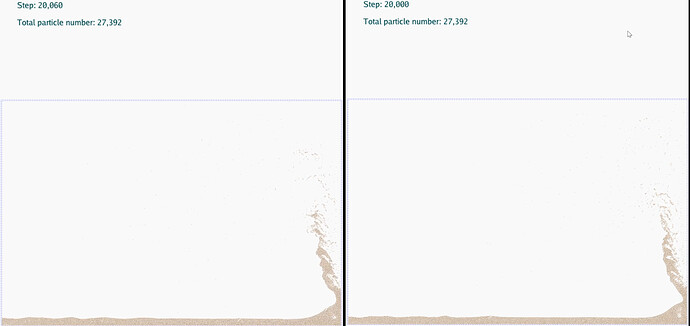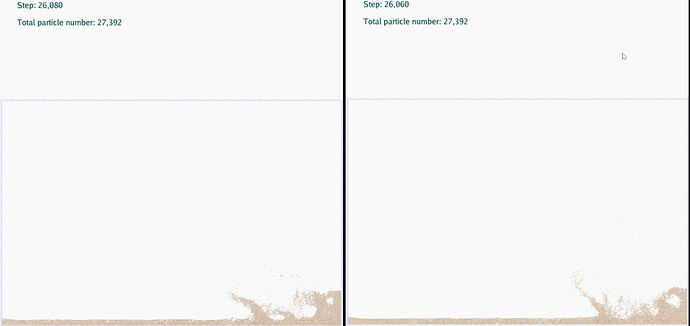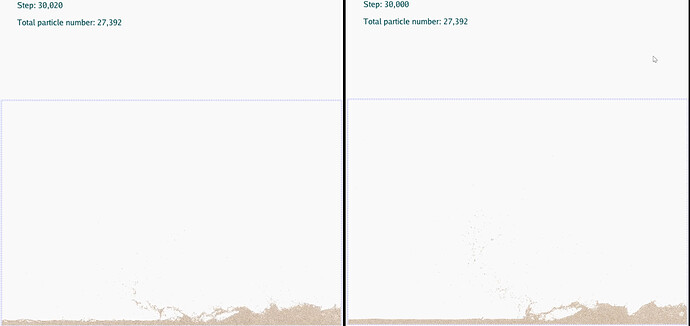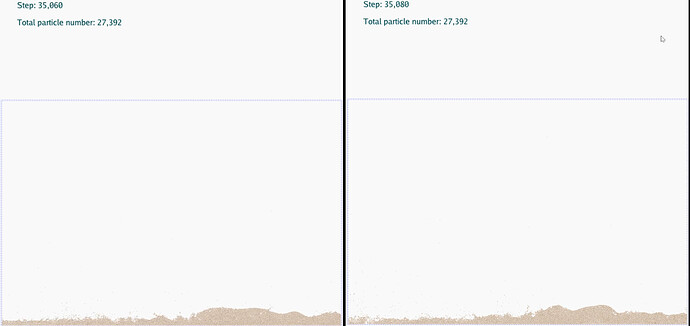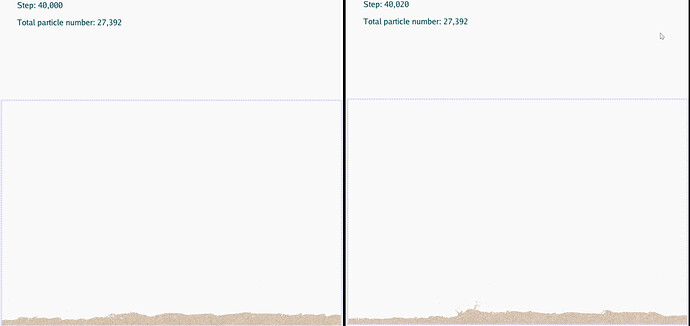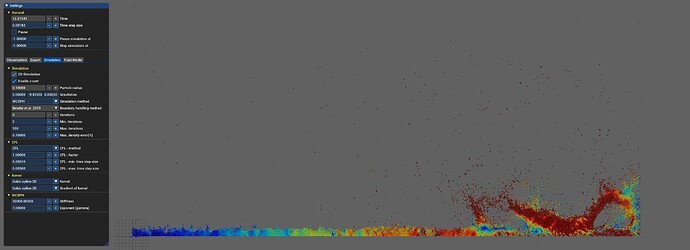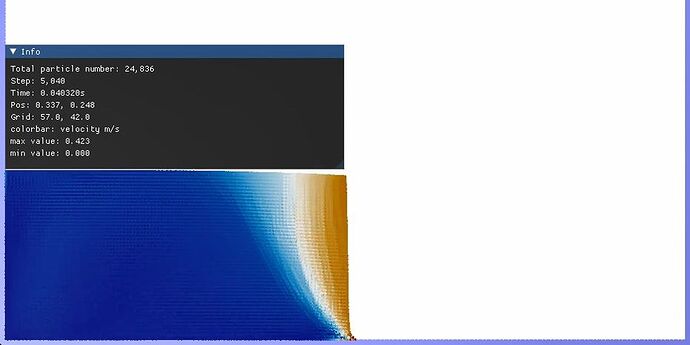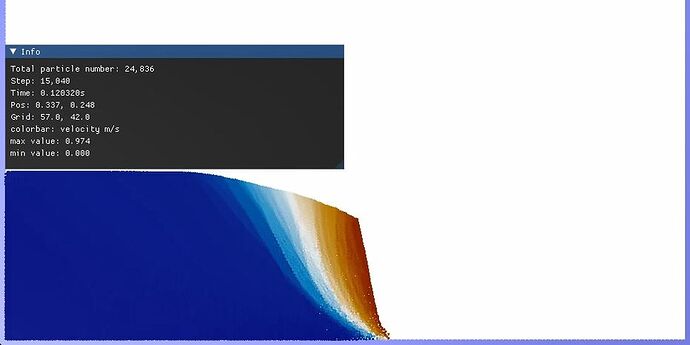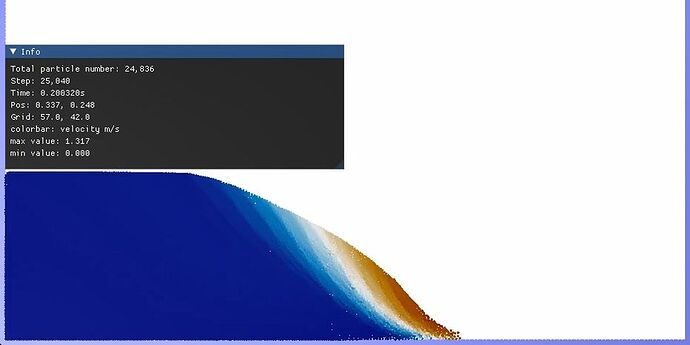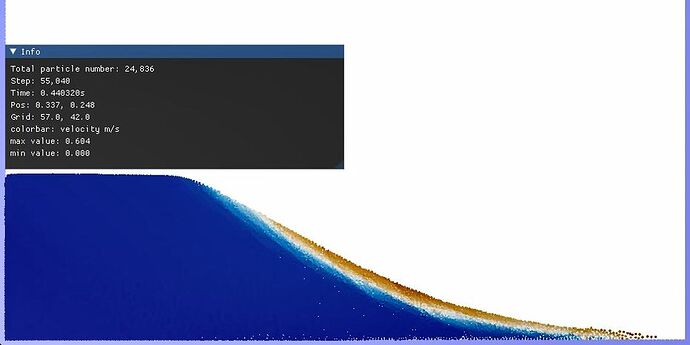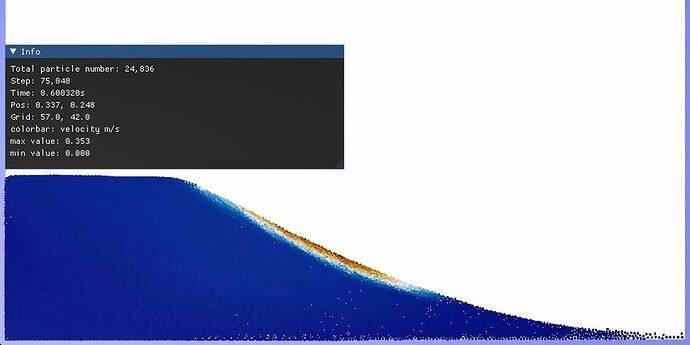太极图形课S1-tiSPHi: from 0 to 0.1
背景简介
源自我的研究学习任务,希冀能通过taichi熟悉并实现泥石流的SPH模拟过程。
伟大的目标:实现3D-SPH-FEM耦合的泥石流模拟!
首先实现SPH求解器,基于土壤的D-P本构模型,模拟简单的sand-column,然后是mud-flow,最后是debris-flow。
小目标:通过WCSPH学习代码思路,基于WCSPH框架实现Standard SOILSPH。
The logo is modified from a basic SPH logo by MichellLaurence on DeviantArt
HINT
然而发现小目标的实现也很困难……
两个星期的学习,tiSPHi from 0 to 0.1 and just 0.1
Know almost nothing of SPH →
Learn basic SPH theory →
Learn basic WCSPH codes →
First try: adding dummy particles →
Learn standard SPH theory for soil →
Try to implement SOILSPH code →
Failed to understand D-P criterion for soil and also cannot implement it in SPH →
Failed to adapt the stress and other paras of soil →
Failed to add repulsive forces in repulsive particles, so cannot delete the collision code in
SPHBASE→Failed to finally use RK4 to advect soil particles →
Return to add repulsive forces in WCSPH to delete the collision code but again Failed →
Try to use RK4 to update particles instead of Symp Euler method, and finally succeed →
It comes to the deadline
挺打击信心的,但更可能是之前太高估自己了,居然想在半个月内实现一个和物理试验相似的砂土模拟。只能暂时提交一个仍旧是水的模拟的大作业了,悲痛欲绝。
但是,好久没有这么酣畅淋漓(抓耳挠腮)地写过代码了!
暂时休息,还有很久的时间发展我的tiSPHi!
作业来源
灵感来源
实现未来的课题!
代码
文献
- 待复现的目标文献 (CM Chalk 2020): Stress-Particle Smoothed Particle Hydrodynamics: An application to the failure and post-failure behaviour of slopes
- CM Chalk的博士论文2019(包含在Stress Particle SPH的GitHub内)
- Ha H Bui 2021: Smoothed particle hydrodynamics (SPH) and its applications in geomechanics: From solid fracture to granular behaviour and multiphase flows in porous media
- Ha H Bui 2008: Lagrangian meshfree particles method (SPH) for large deformation and failure flows of geomaterial using elastic-plastic soil constitutive model
运行方式
运行环境:
[Taichi] version 0.8.1, llvm 10.0.0, commit cc2dd342, win, python 3.8.1
[Taichi] Starting on arch=cuda
运行方式
修改draft2_water.py中的参数即可运行模拟自由释放水柱(默认位于容器左下角)的WCSPH。
-
world: 容器的物理边界尺寸,单位m -
particle_radius: 物质点粒子半径 -
kh: 支持域半径对物质点粒子半径的倍数 -
cube_size: 水柱的宽度与高度 -
flag_pause: 模拟开始时的暂停状态 -
add_cube函数中可调整初始速度、初始压力、密度、颜色等属性
快捷键
-
SPACE控制模拟的开始/暂停 -
ESC停止并退出模拟
效果展示
my WCSPH
Advect with Symplectic Euler
Video of WCSPH with Symp Euler
Advect with RK4
Video of WCSPH with RK4
Compare the specific frames of these two result: (RK4 on the left and Symp Euler on the right)
(I think the RK4 advection represents a better result, ![]() BUT really it is very very very very very slow!!!)
BUT really it is very very very very very slow!!!)
SPlisHSPlasH
WCSPH in SPlisHSPlasH (also I think my wcsph simulation looks better than that in SPlisHSPlasH)
Video of WCSPH in SPlisHSPlasH
DFSPH in SPlisHSPlasH (but still not as good as DFSPH)
Video of DFSPH in SPlisHSPlasH
整体结构
-LICENSE
-|data --存放动图、视频等数据
-|eng --存放engine代码
---__init__.py
---particle_system.py
---sph_solver.py
---wcsph.py
---soilsph.py
-|img --存放图片
-|temp --存放测试代码、学习资料、算法流程图、草稿、临时文件等
-README.MD
-draft0.py --最初的测试代码,无用
-draft1_soil.py --测试SOILSPH使用的代码,目前尚未完成且存在错误
-draft2_water.py --测试更新后WCSPH使用的代码,目前尚可正常运行
-Hint.py --记录编程过程中的一些烦恼以及锻炼英语
-note_SPH.md --学习笔记
实现细节:
请给出代码的具体实现流程和细节,让感兴趣的人能够更深入的了解你的代码。
以taichiCourse中的wcsph代码框架,加入了一些自己的改进(Maybe可以说是改进),具体的实现细节详见笔记:
- 在
ParticleSystem中加入了边界dummy particles的生成(基于add_cube函数) - 在
SPHSolver中加入了速度等重要信息最大值的每一步的输出,用于检查 - 在
WCSPHSolver中加入了文献中的边界处理方法,即在对每一个流体粒子i的循环过程中,处理i的支持域中存在的dummy particles - 在
WCSPHSolver中实现了RK4时间积分方法(尽管它巨慢无比,尚未知为什么4倍的计算量导致计算速度降低至少20倍)

